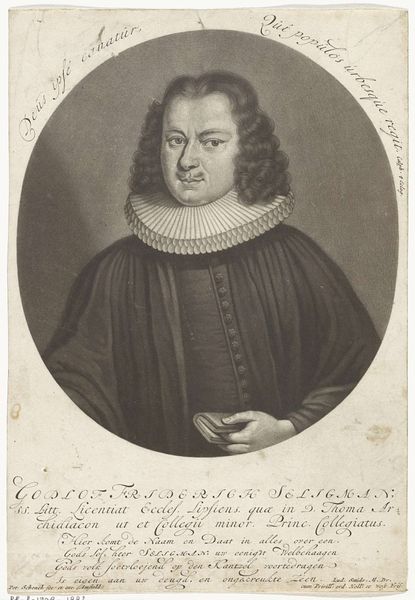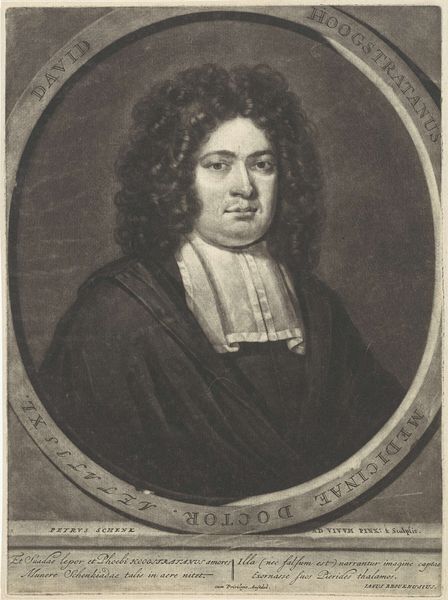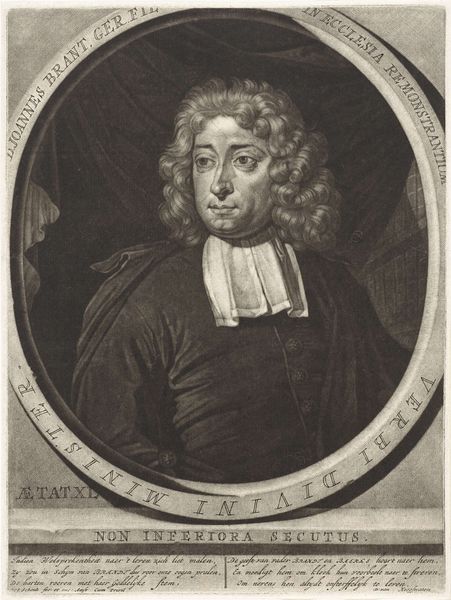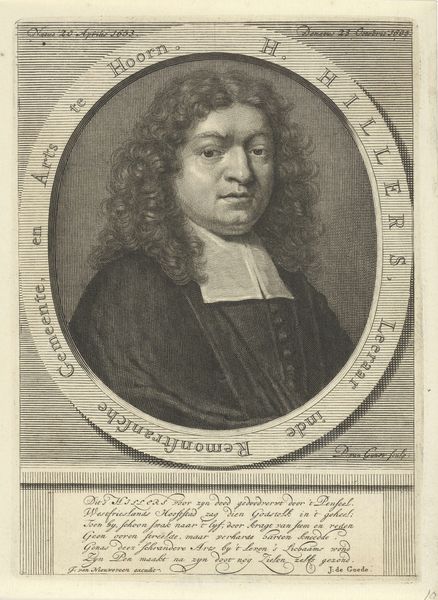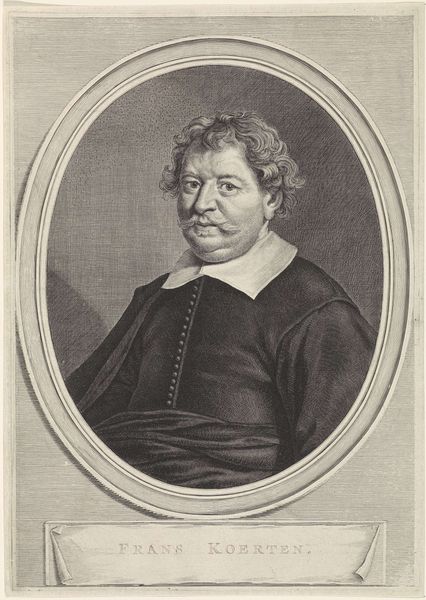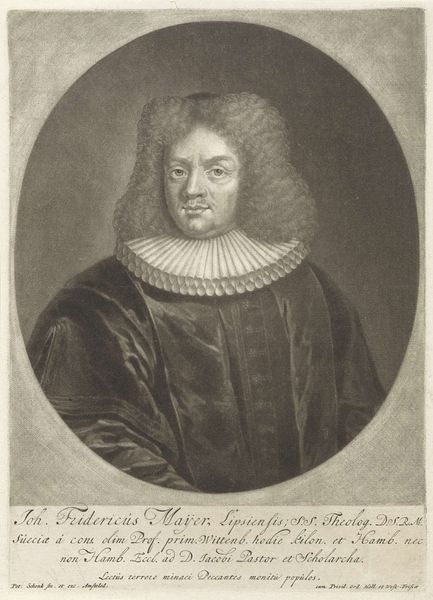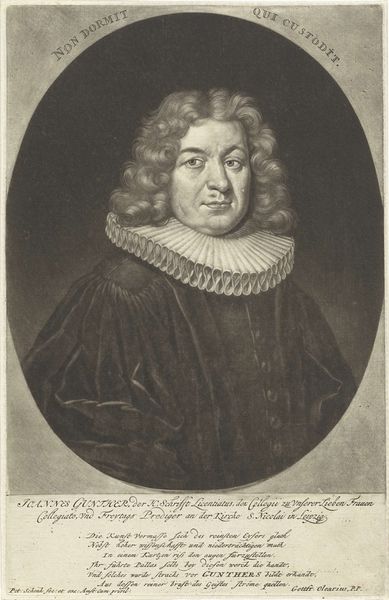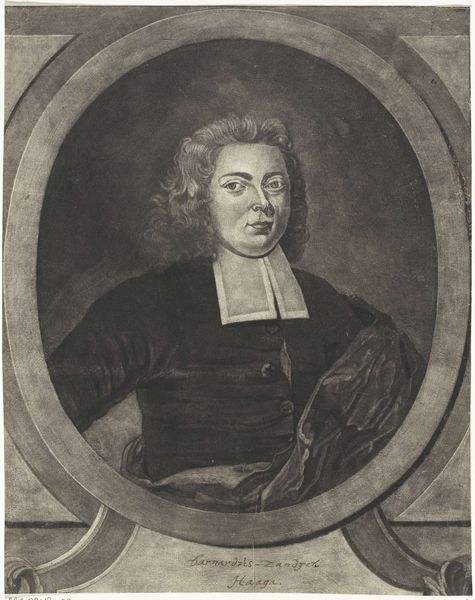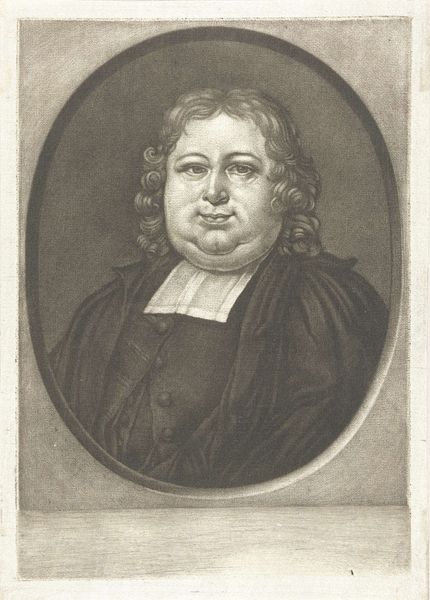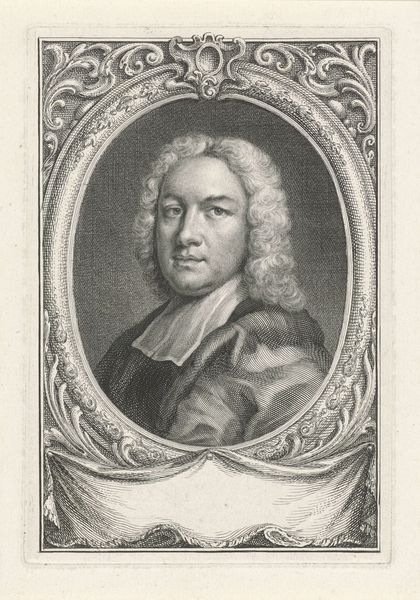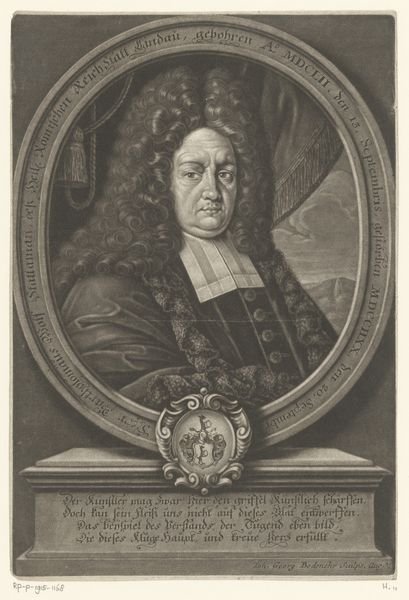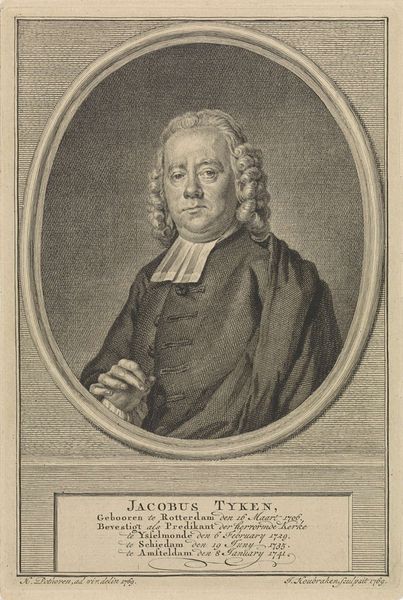
Portret van Lothar Franz, graaf van Schönborn, keurvorst en aartsbisschop van Mainz 1670 - 1713
0:00
0:00
print, engraving
#
portrait
#
baroque
# print
#
engraving
Dimensions: height 248 mm, width 176 mm
Copyright: Rijks Museum: Open Domain
Curator: This portrait radiates an aura of authority and composure, wouldn't you agree? There's a subtle but firm expression. Editor: Indeed. It appears as a copper engraving crafted sometime between 1670 and 1713. Its formal title is "Portret van Lothar Franz, graaf van Schönborn, keurvorst en aartsbisschop van Mainz," made by Pieter Schenk. The Baroque extravagance is evident even in monochrome. Curator: The framing emphasizes his face, almost to the point of overwhelming other details. Observe the texture contrast: the softness of his hair against the sharp lines defining his jaw. The collar isolates his head from the more ornate garments. Editor: Consider Lothar Franz's position in society. He wasn't simply a nobleman but also a powerful clergyman and elector. The Baroque style was instrumental to broadcast a powerful image through complex iconographies within aristocratic circles, thus visualizing power to reassert socio-political beliefs. The elaborate cross signals devotion to duty as a servant of god but also reflects wealth and power through materials and detailing. Curator: What I find striking is Schenk's delicate etching technique that builds form by juxtaposing stark black lines with lighter shades. It offers depth in a unique fashion. There is very subtle texturing within this. This use of chiaroscuro creates shape, particularly on his face, highlighting its prominence as well as softening the curves on his face and rendering a three dimensional person. Editor: Precisely. Think of where this portrait may have resided – perhaps adorning the walls of his palace or disseminated as prints across his electorate. The Baroque served political aspirations, becoming deeply entrenched within court culture. These aren't passive images but deliberate assertions of power and influence, in what becomes part of the visual rhetoric within that social context. Curator: So, ultimately we appreciate more than just Lothar Franz's face. We see an epoch distilled. Editor: A small window into a world of faith, influence and artistry.
Comments
No comments
Be the first to comment and join the conversation on the ultimate creative platform.

